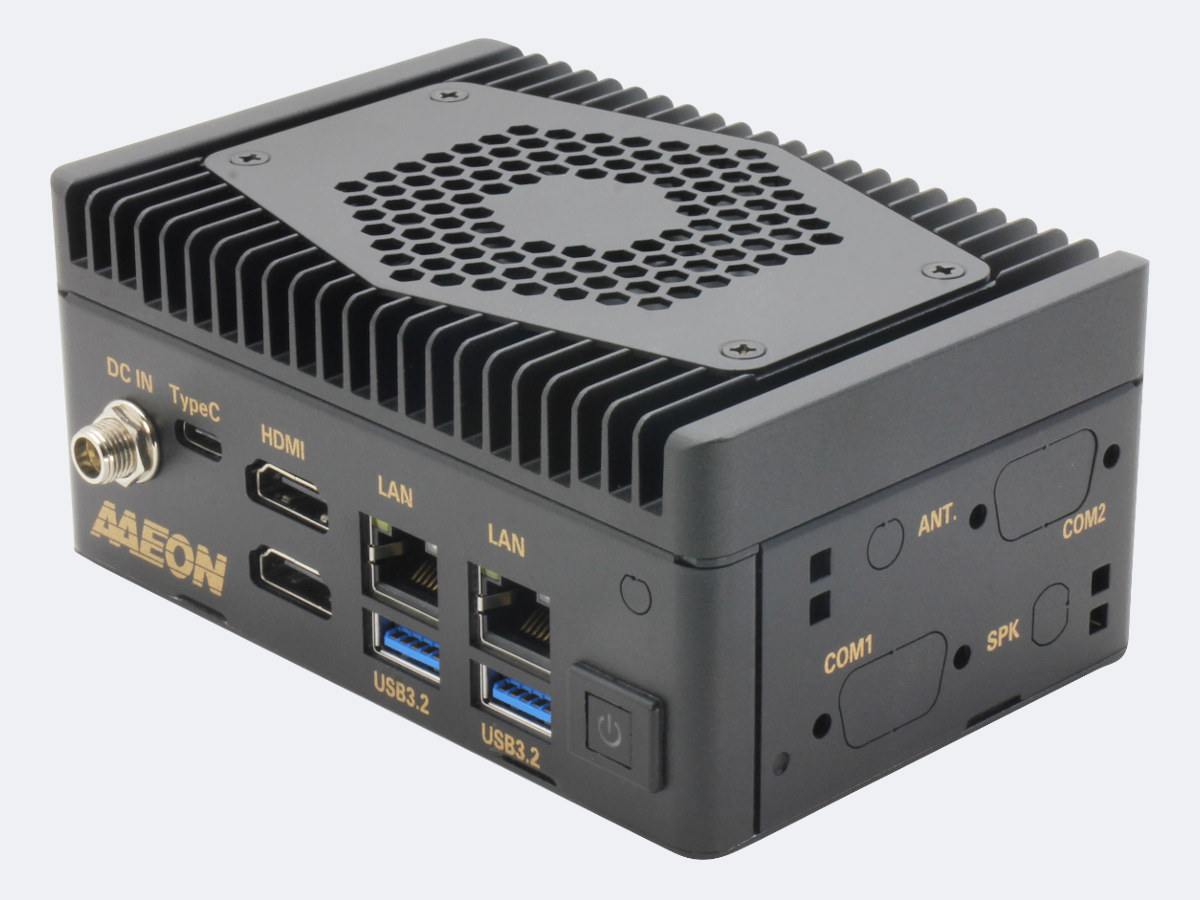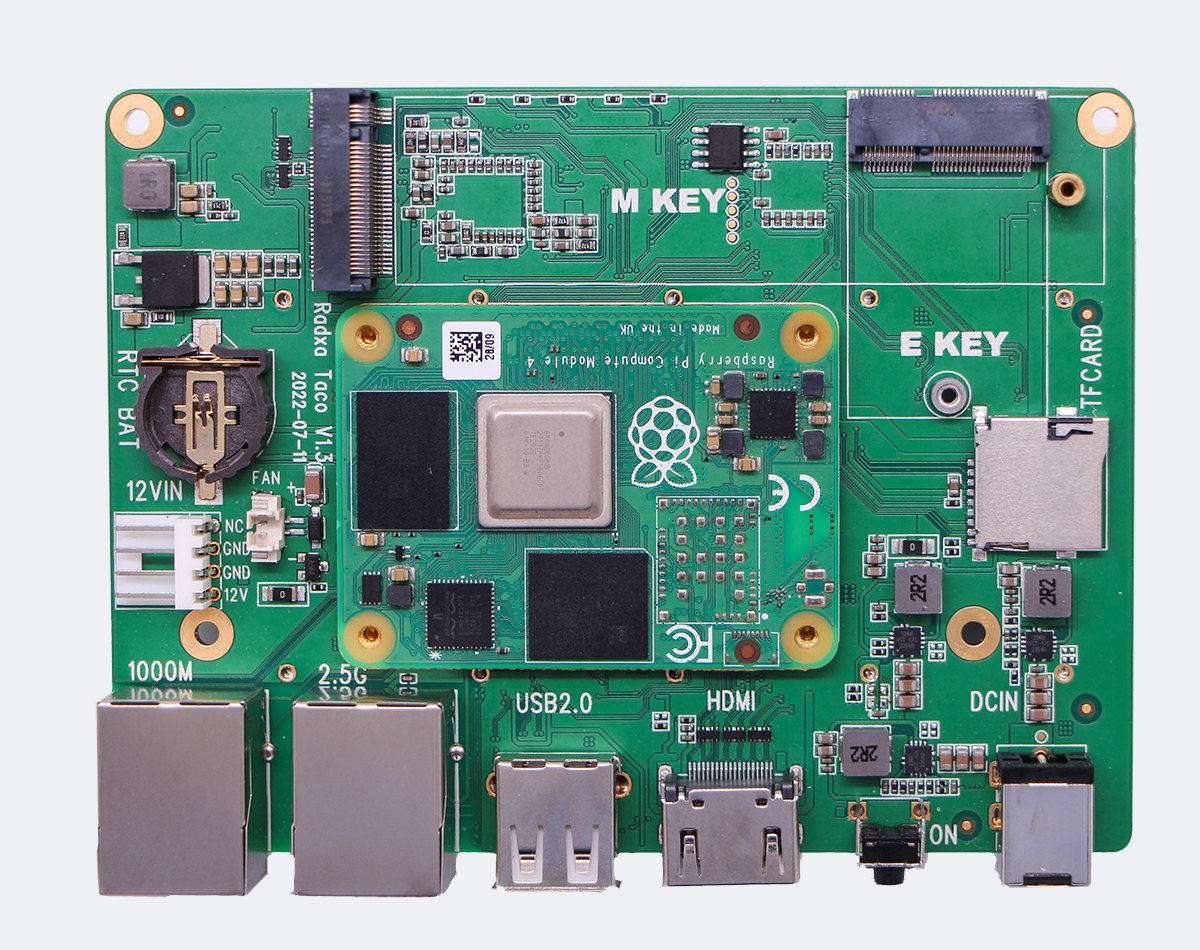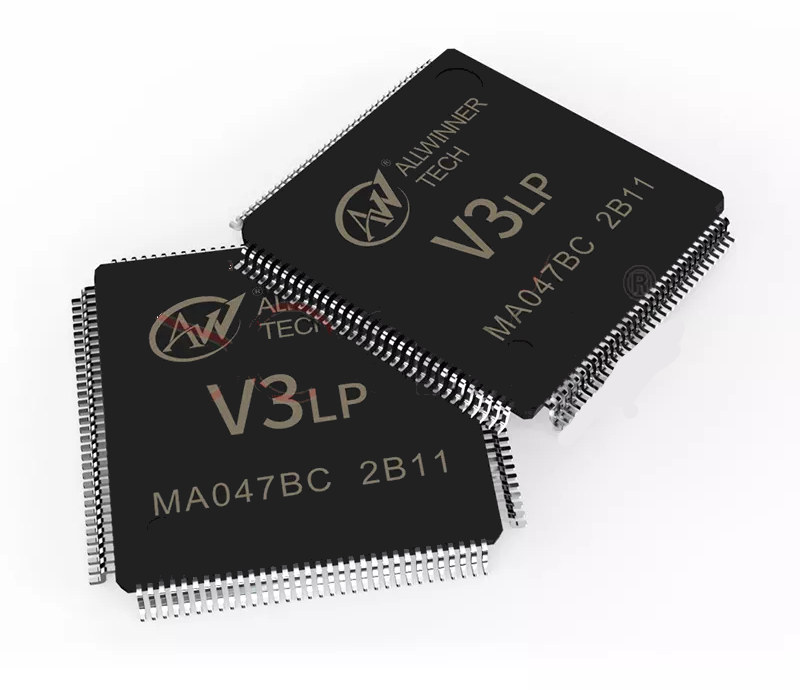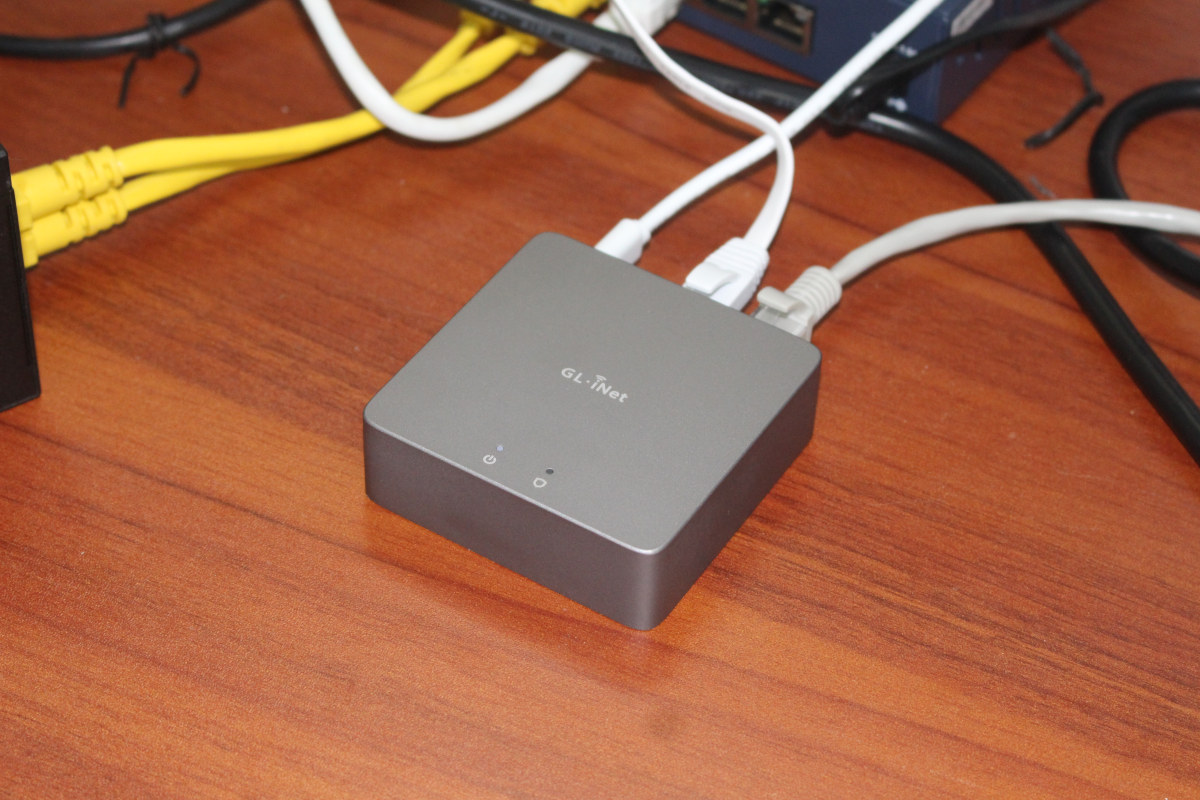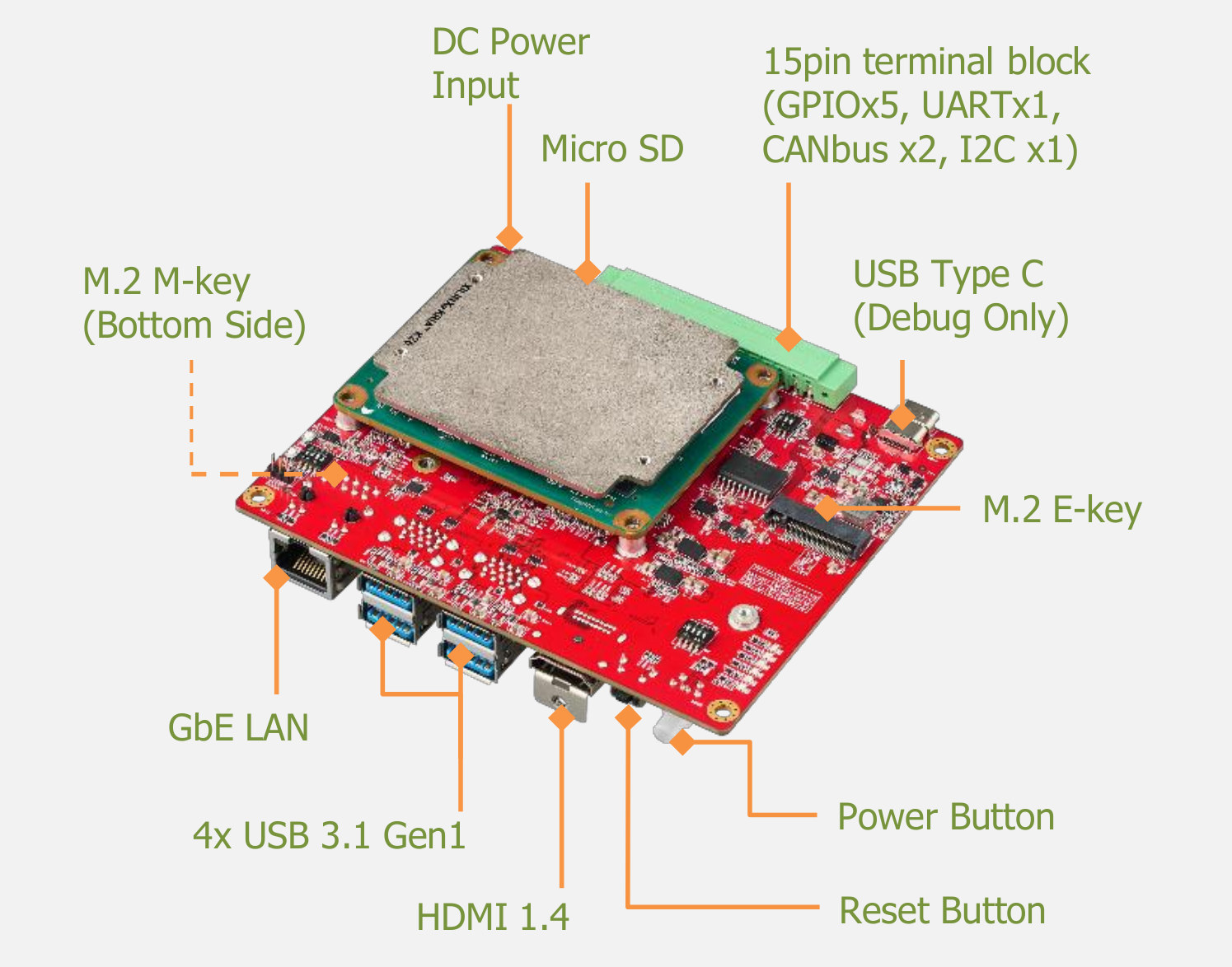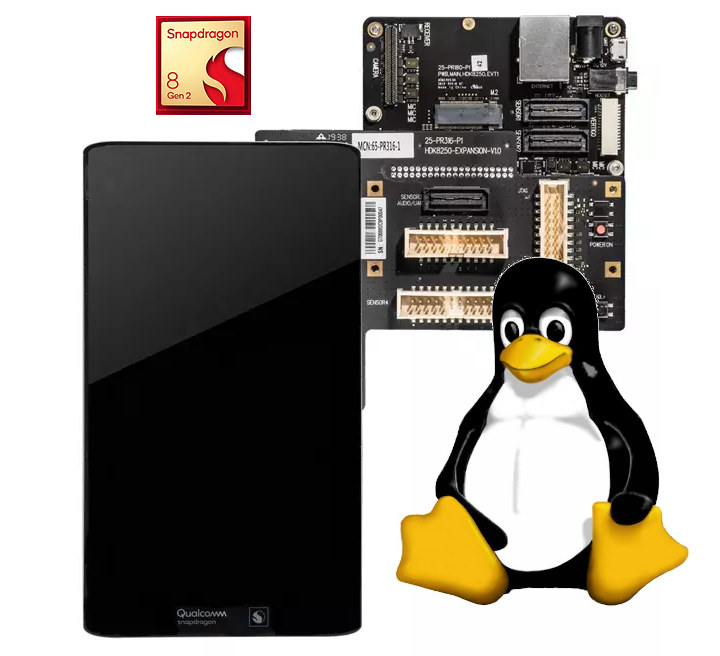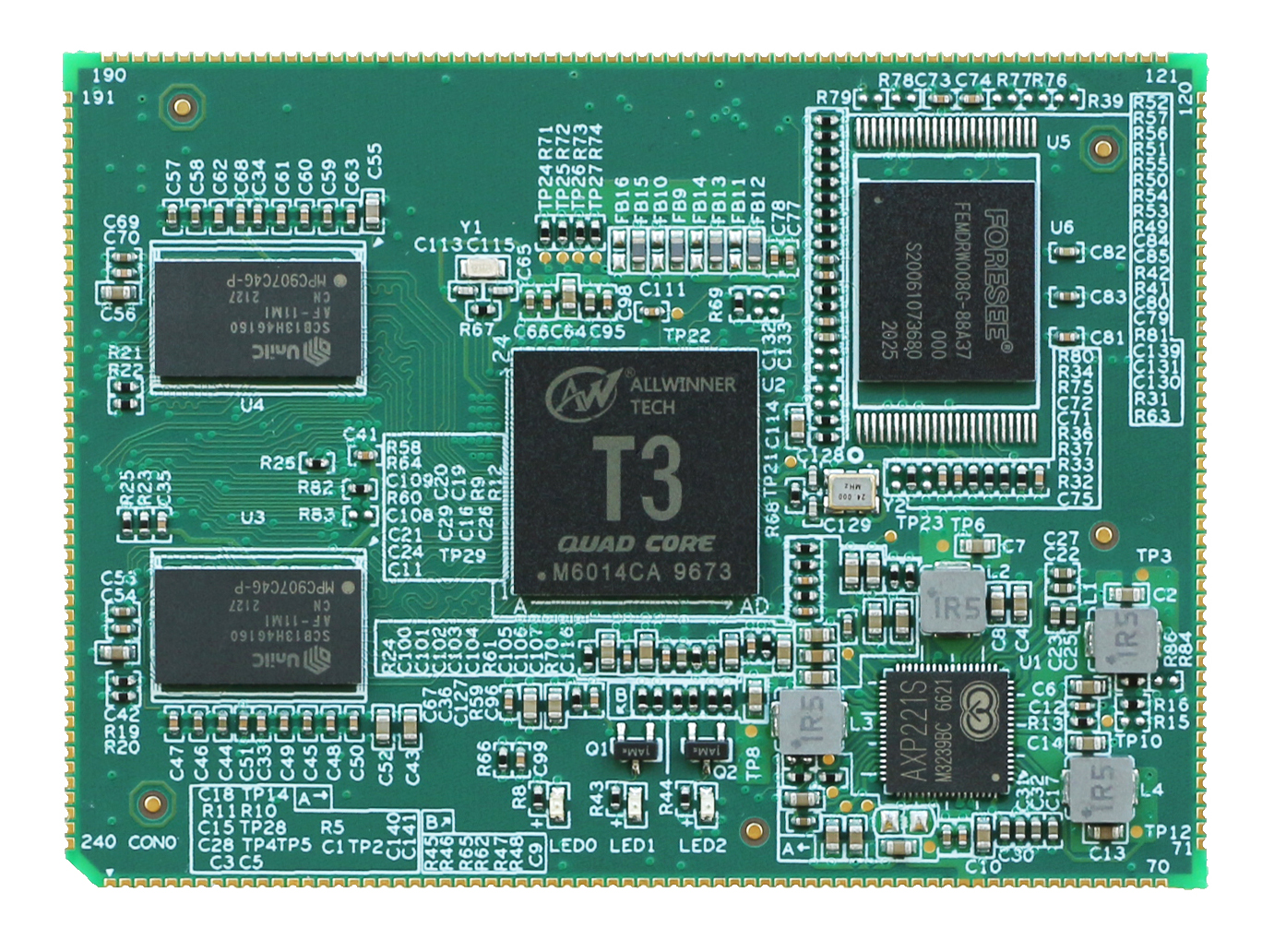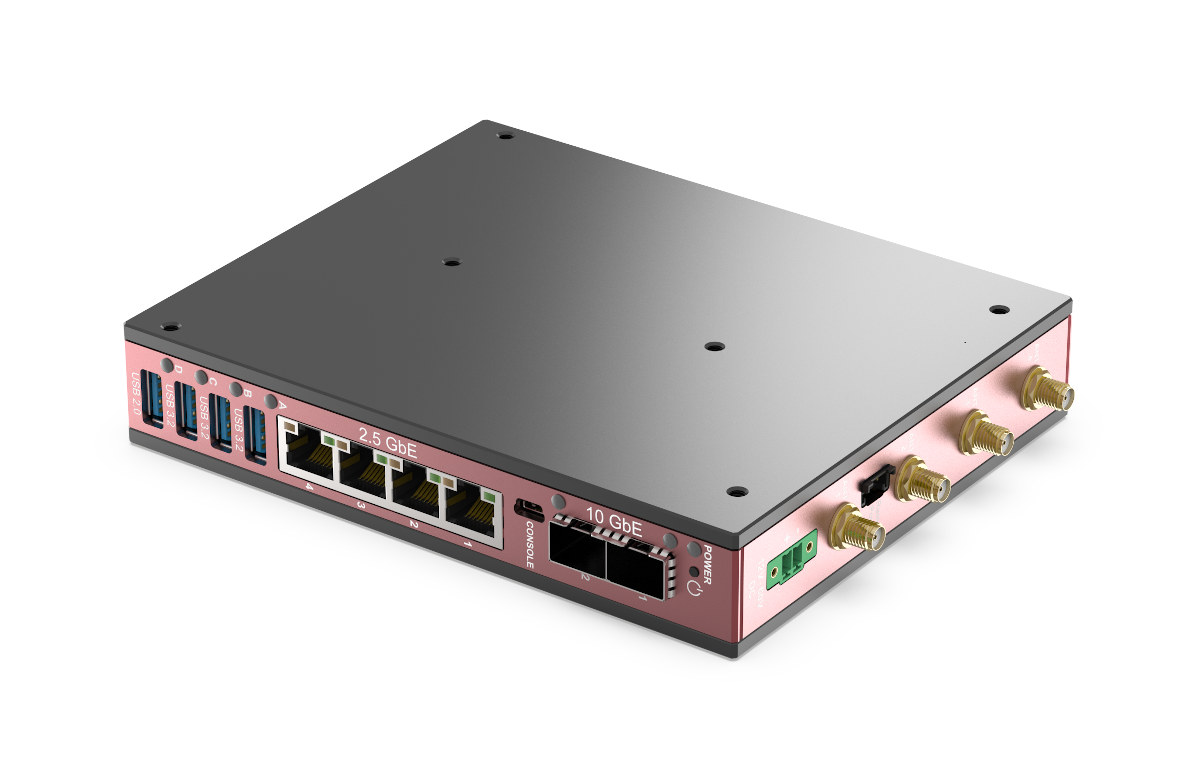AAEON PICO-V2K4-SEMI mini PC, powered by an AMD Ryzen Embedded V2516 or V2718 processor, can drive up to three 4K displays, offers 2.5GbE and GbE networking, several USB 3.2 ports, as well as two optional COM ports supporting RS232, RS422, and RS485. The first mini PC from the company featuring AMD Ryzen V2000 Series processors also comes with up to 32GB RAM, a 64GB NVMe SSD, as well as M.2 and mPCIe sockets for expansion, and its compact form factor makes it suitable for edge computing, embedded gaming, and image processing applications. PICO-V2K4-SEMI specifications: AMD Ryzen Embedded V2000 processor (one or the other) Ryzen V2718 octa-core/16-thread processor @ up to 1.7-4.15 GHz (Turbo) with Radeon RX Vega 7 GPU; TDP: 10-25W Ryzen V2516 hexa-core/12-thread processor @ up to 2.1-3.95 GHz (Turbo) with Radeon RX Vega 6 GPU; TDP: 10-25W System Memory – 8GB to 32GB LPDDR4x 3733 MHz Storage Up […]
Radxa Taco – A Raspberry Pi CM4 carrier board made for NAS with 5x SATA ports
The Radxa Taco is a carrier board for Raspberry Pi CM4 and compatible system-on-modules that is designed for NAS applications with five SATA ports for 2.5-inch or 3.5-inch drives, 2.5GbE and GbE networking, M.2 sockets for expansion, and more. The new board is the successor of the Rock Pi SATA HAT designed for the Raspberry Pi 4 SBC or Raxda Rock Pi 4 single board computers and supports more SATA drives, M.2 NVMe storage, optional WiFi 6, built-in RTC support, and so on. Radxa Taco specifications: Supported SoMs Raspberry Pi CM4 or CM4 Lite Radxa CM3 based on Rockchip RK3566 quad-core Cortex-A55 processor Maybe others Storage 5x SATA interfaces for 2.5-inch HDD or SSD up to 15mm thick, support for 3.5-inch drive via cables, software RAID 0/1/5 1x M.2 M Key 2280 socket for NVMe SSD MicroSD card slot Networking 2.5GbE RJ45 port Gigabit Ethernet RJ45 port Optional WiFi 6 […]
Allwinner V3LP gets low voltage RAM, should replace Allwinner V3S dual camera SoC
Allwinner V3LP is a single-core Cortex-A7 processor for dual-camera systems with the exact same specifications as the Allwinner V3S processor introduced in 2016, except it should be more power efficient with a lower DDR operating voltage of 1.5V instead of 1.8V. Sochip explains that procuring the integrated DDR2 in the Allwinner V3s design is challenging, so Allwinner has replaced the memory in the pin-to-pin compatible Allwinner V3LP with more broadly available and lower power RAM. Allwinner V3LP specifications: CPU – ARM Cortex-A7 @ up to 1.2 GHz Memory – Integrated 64MB DDR2 DRAM @ 1.5 V Storage I/F – SD 2.0, eMMC 4.41, SPI NAND flash, SPI NOR flash Audio Codec – 92dB audio codec supporting 2x ADC channels and 2x DAC channels, 1x low-noise analog microphone bias output, 1x microphone input and 1x stereo microphone output Video Processing Unit Encoding – 1080p@40fps or 1080p@30fps + VGA@30fps H.264 Decoding – […]
Brume 2 router review with WireGuard, OpenVPN, Tor, and Adguard Home
We started the review of GL.inet GL-MT2500A security gateway, aka Brume 2, with an unboxing and teardown, and I’ve now had time to test the router in more detail so I’ll report my experience using the router with OpenVPN and WireGuard VPN, Tor, Adguard Home, and more. In a nutshell, it’s super easy to use, unless your ISP causes troubles, which it did in this case. Brume 2 connection and initial setup I connected the WAN port of the Brume 2 router to 3BB’s modem router (3BB is an ISP in Thailand), the LAN port to my laptop, and finally the USB-C power supply (power draws is 2.3 Watts at idle). Let’s now go to the dashboard using the default IP (192.168.8.1). This will take us through the configuration wizard to select the language and set up the admin password. I was then immediately greeted by an “Upgrade Reminder” and […]
Innodisk EXMU-X261 FPGA Machine Vision Platform is based on AMD Xilinx Kria K26 SoM
Innodisk, better known for its embedded storage and memory chips, had announced its intention to turn to the AI market earlier and started with the launch of USB camera modules last month, but the company has gone a step (or two, or three) further with the introduction of the EXMU-X261 FPGA machine vision platform. The EXMU-X261 is powered by an AMD Xilink Kria K26 system-on-module and features HDMI 1.4 video output, Gigabit Ethernet, four USB 3.1 Gen 1 ports for the cameras and other peripherals, as well as two M.2 sockets and a terminal block for expansion. EXMU-X261 specifications: System-on-module – AMD Xilinx Kria K26 FPGA module powered by a Zynq UltraScale+ XCK26 FPGA MPSoC with a quad-core Arm Cortex-A53 processor, up to 250 thousand logic cells, and a H.264/265 video encoder/decoder Storage – MicroSD card socket Video Output – HDMI 1.4 port Networking – Gigabit Ethernet RJ45 port USB […]
Qualcomm Snapdragon 8 Gen 2 SoC gets upstream Linux support
Qualcomm unveiled the Snapdragon 8 Gen 2 mobile platform just a few days ago, but Linaro has just announced that Linux was already upstreamed to the premium mobile SoC featuring a 3.2 GHz Arm Cortex-X3 “Prime” core, four performance cores at up to 2.8 GHz, and three Efficiency cores clocked at up to 2.0 GHz. Most of the work was done by Linaro Engineers Abel Vesa and Neil Armstrong with initial support posted on November 16th on the Linux kernel mailing list, and with the set of patches released so far, it is even possible to boot a minimal AOSP image on a Snapdragon 8 Gen 2 development kit shown below which should be manufactured by Lantronix, if history is any guide. The following features are enabled in mainline Linux for the Qualcomm 8 Gen 2 processor, codenamed SM8550: Qualcomm Kryo CPUs with DVFS and Power Control support System – […]
Allwinner T3 automotive-grade processor powers industrial-grade SoM
Allwinner T3 is a quad-core Cortex-A7 automotive-grade processor that supports a wide industrial temperature range of -40°C to +85°C. After comparing the specifications of Allwinner T3, I think it is the same as Allwinner A40i, as Allwinner has different business units and the T-series is for the automotive-grade market, while the A-series has historically been for the tablet market, but is now also used in the industrial-grade market. Tronlong SOM-TLT3 and SOM-TLT3-B are Allwinner T3 system-on-modules (SoM) of Allwinner T3. Both modules have basically the same specifications but the SOM-TLT3 comes with castellated holes for soldering to the carrier board, while the SOM-TLT3-B features board-to-board connectors. Tronlong SOM-TLT3 / SOM-TLT3-B specifications: CPU – Allwinner T3 quad-core Arm Cortex-A7 @ 1.2 GHz with 32KB L1 I-cache + 32KB L1 D-cache, 512KB L2 cache. GPU – Arm Mali-400 MP2 with support for OpenGL ES 1.1/2.0, Open VG 1.1 Memory – 1/2GByte DDR3 […]
Bedrock V3000 Basic fanless industrial computer is powered by an AMD Ryzen Embedded V3000 processor
SolidRun Bedrock V3000 Basic is an industrial fanless computer based on the new AMD Ryzen Embedded V3000 Zen3 processor family designed for storage and networking applications. More specifically, the embedded computer is based on the AMD Ryzen Embedded V3C48 octa-core/sixteen-thread processor with up to 64 GB DDR5 memory, support for up to three M.2 key-M 2280 NVMe SSDs, and impressive network connectivity options with two SFP+ cages capable of 10 Gbps speeds, four 2.5GbE RJ45 ports, and optional support for WiFi 6, 4G and/o 5G cellular connectivity. Bedrock V3000 Basic specifications: SoC – AMD Ryzen Embedded V3000 family with up to 8C/16T Zen3+ cores @ up to 3.8 GHz; TDP: Up to 45W System Memory – Quad-channel DDR5-4800 up to 64 GB ECC / non-ECC via 2x SODIMM socket. The RAM is conduction-cooled Storage 1x M.2 key-M 2280 NVMe PCIe Gen4 x 4 socket, conduction-cooled, with optional power-loss protection 2x […]


